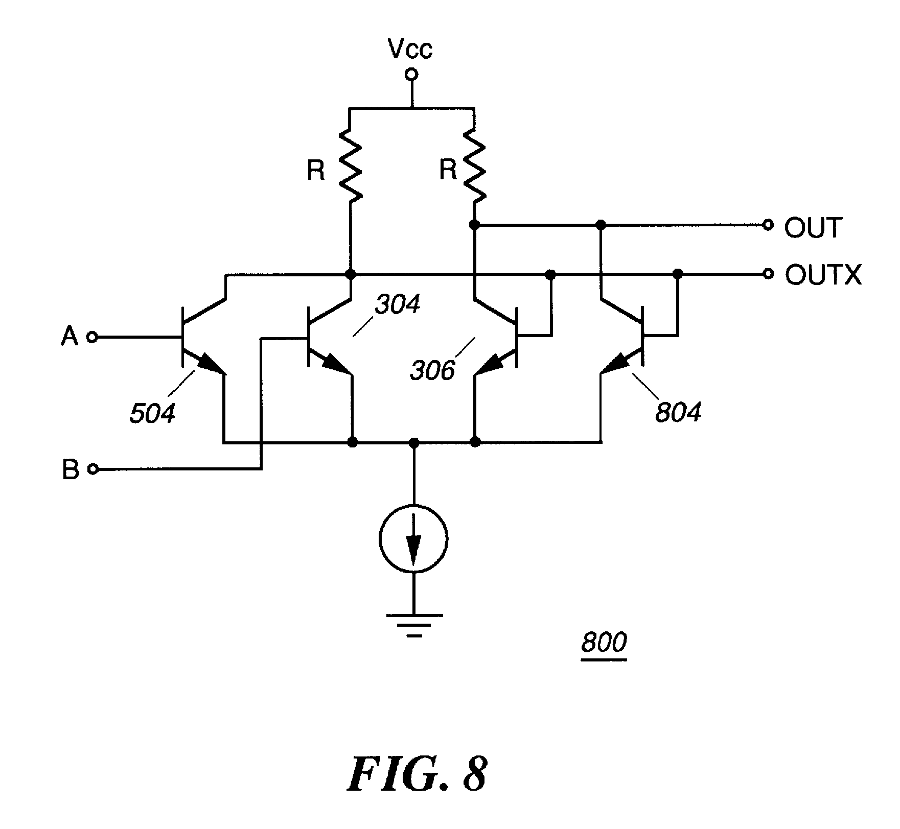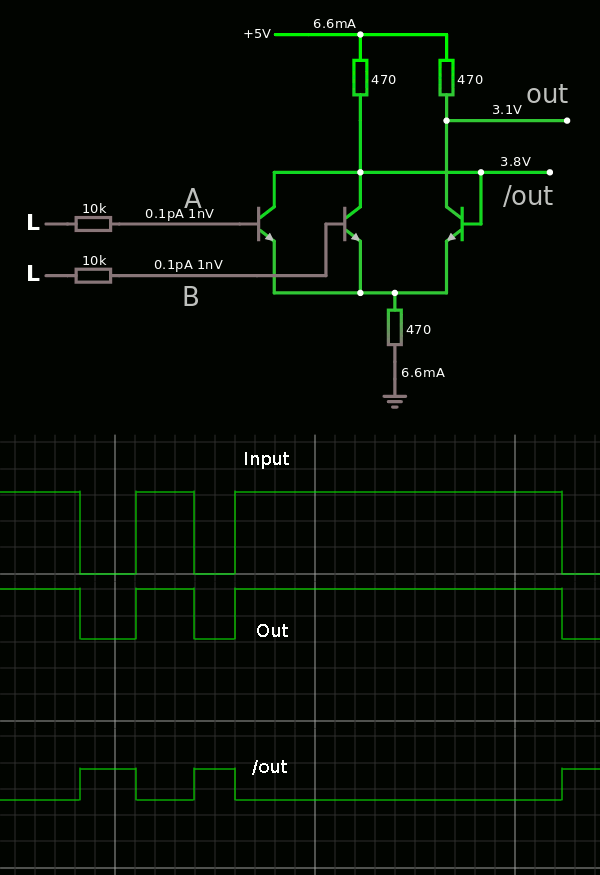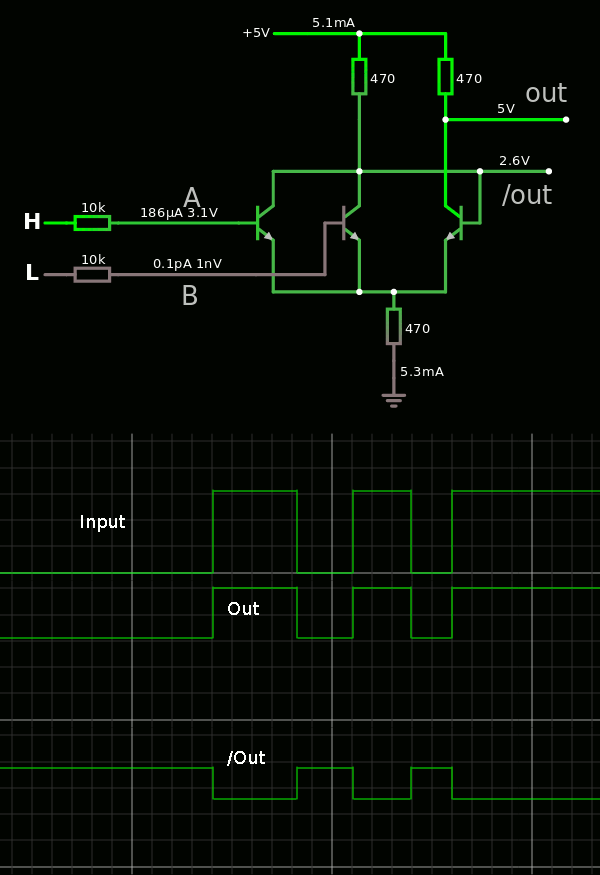As I start to "get" ECL, I discover its topological language and various methods to do the same thing.
For example a OR gate, without the common bias node of MECL10K, found in an old patent http://www.google.ch/patents/US5831454 :

So that's one thing to do : compare this topology with the common-zener one. As germanium is pretty sensitive, I wonder which circuit will work best.
The latches are another concern, apparently there are a few ways to make them, and 6 transistors per latch seems to be the minimum (12 per DFF, similar to other technologies).
Update 20200524:
Thank you Falstad :-)
The 2 transistors on the right are just to balance the current because of the gain... So I try with only one.
The sims show that the output levels are not comparable :


The inverting output has a lower range than the non-inverting output... It is indeed clamped by the base of the right-hand transistor.
Finding the right values for the resistors is another challenge, it's not mentioned in the patent (?)
With all resistors at 470, I find :
Vin-h : 3.1V
Vout : 5V - 3.1V
V/out : 3.8 - 2.6V
Anyway this is an unbalanced system because in "normal" ECL the branches are mostly independent.
The non-inverting output needs to be level-shifted...
And it is a system that has about 1.2V of hysteresis !
 Yann Guidon / YGDES
Yann Guidon / YGDES
Discussions
Become a Hackaday.io Member
Create an account to leave a comment. Already have an account? Log In.
This stuff makes me wonder... So much of our processing-power these days is *constantly* changing-state... and, for mosfets, the most current-draw is *while* changing-state... Almost seems like there'd be a balance somewhere where using something like ECL would actually take less-power than the equivalent CMOS.
Are you sure? yes | no
They tried with the Pentium4 :-D
You haven't heard about the "dark silicon" problems though.
Are you sure? yes | no
Interesting, learned a lot. But can't find this about the P4... search-fu fail, I guess :/
Are you sure? yes | no
Dark silicon : it's hard today to feed all the transistors with power when all the parts of the chip are active. So it's not a good idea to let them work in constant-current-like mode. It's important that not everybody switches at the same time, or the resistance of the supply wires drops too much voltage.
About P4 : I have no confirmation about the internal technology but they used a sort of ECL-like topology to reach the screaming speeds. Of course, screaming power consumption. Not a desired trend, particularly when the chips get larger, power supply wires are longer and drop more (hence the dark silicon remark).
Fortunately I'm not affected by this now ;-)
Are you sure? yes | no